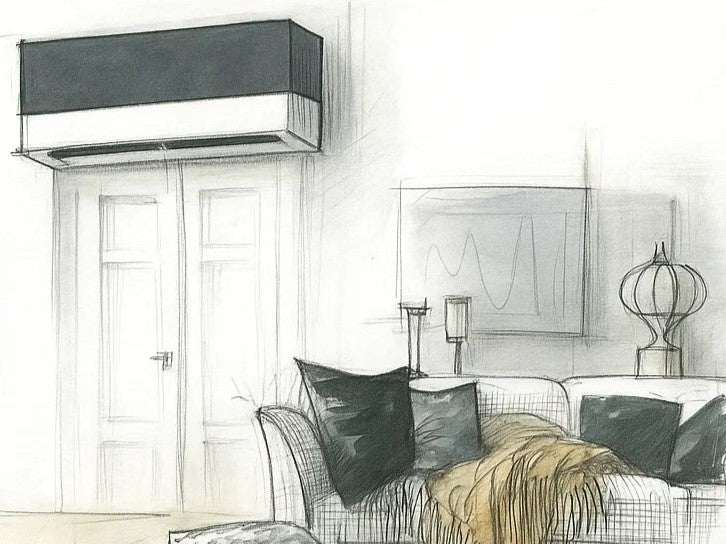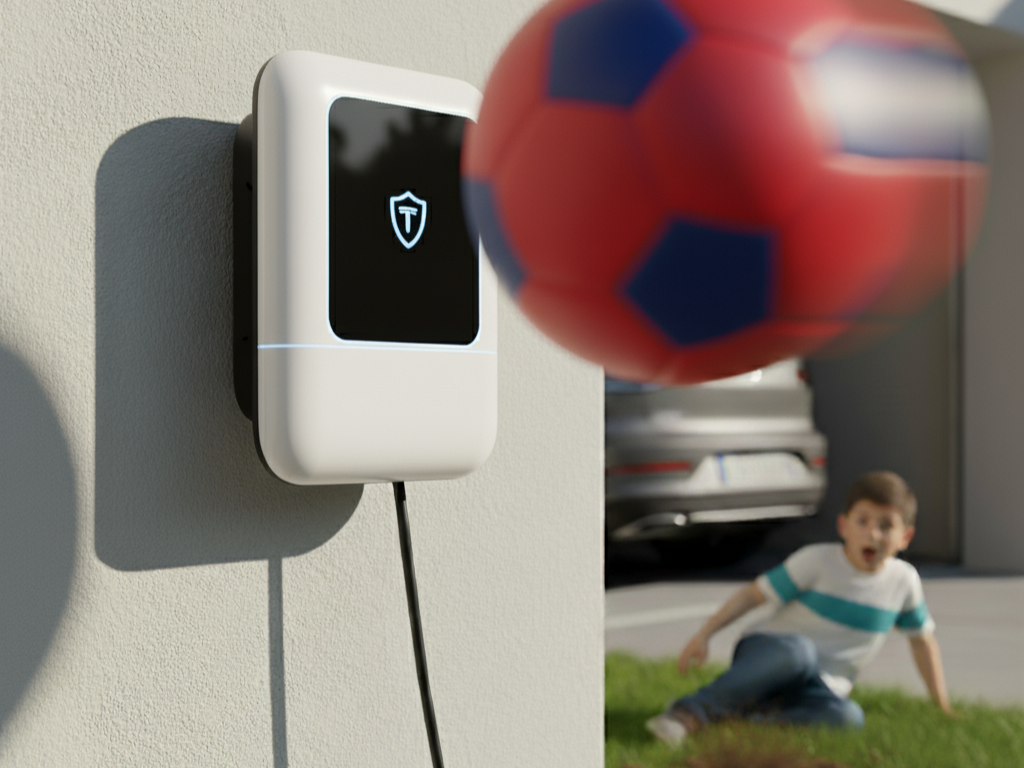The design that celebrates what everyday life wants to hide
The true beauty of design lies in its ability to transform the ordinary into the extraordinary, to give a soul to objects born to be invisible. An air conditioner — a silent, technical, often overlooked element — becomes, through careful design, an eloquent actor in the domestic scene.
In our work, this tension between function and narrative pushed us beyond the obvious. We wanted the design split cover not to be just a casing, but an aesthetic gesture that works on several levels: visual, emotional, symbolic. The goal? To transform a technical appliance into a visual — even evocative — narrative.

Beyond the technical gesture: The search for a language
In contemporary design, thinkers and practitioners have revived the idea that an object can stir deep emotions: the article “Giving Your Product a Soul” underlines how the best products are those in which users see not only utility but also feel an emotional connection (Smashing Magazine). Likewise, Al Lucca reminds us that in an age of standardization, we need to restore room for intuition and personal creativity in the design process (UX Collective).
In both art and industry, figures like Faye Toogood embody this symbolic fusion of function and meaning: her works combine art, fashion, and furniture, turning every object into a visual narrative (Hube magazine). Similarly, Naoto Fukasawa, with his concept of super normal, exalts invisible simplicity: objects that do not force attention but instead blend gracefully into everyday life, becoming familiar and reliable (Financial Times).

The Muses as a design archetype
We did not want to simply cover — we wanted to poetize. That’s how the three variants came to life: Clio, Talia and Terpsichore — not decorative labels, but archetypal figures. Clio safeguards memory, Talia embodies festive lightness, Terpsichore dances in form.
Because when design manages to give a soul even to what is born only to serve, it becomes material culture, capable of elevating the everyday to an aesthetic experience.
Clio – The memory that makes things celebrated
In Greek mythology, Clio is the Muse of history, the one who guards the memory of past deeds and passes them on to posterity. Her name means “to celebrate” and “to make famous”: a call to the awareness of our roots, to give meaning to the present.
In our project, Clio is the point of origin, the variant from which everything took shape. It synthesizes what is essential to us: clean lines, harmonious proportions, and a balance that conveys stability and authority. The design speaks a timeless aesthetic. Materials and finishes are chosen for their refined sobriety, able to resist fashions. As in Dieter Rams’ projects, Clio does not need to impose itself: its strength lies in discretion, in a silent elegance that leaves a mark.
It does not try to hide; it becomes a stable sign in space. Like the Muse, it preserves and enhances its context, turning a technical element into a reassuring, timeless presence.
Discover the Clio design split cover

Talia – The joy that brings lightness
In Greek mythology, Talia is the Muse of comedy and bucolic poetry. Her name means “the one who blooms” and “the festive one”, often depicted with a radiant smile — a symbol of welcoming, luminous energy. She is the Muse who brings lightness, transforming everyday life into a moment of shared joy.
This same attitude is at the heart of Talia’s design. Its soft, fluid lines seem to welcome the gaze and soften perception. It is not rigid or distant, but a friendly presence that fits naturally into domestic and collective spaces. Carefully studied proportions avoid excess and transmit balance, while the finishes — luminous yet never intrusive — create a dialogue with light and surrounding furniture.
Discover the Talia design split cover

Tersicore – Harmony in motion
In Greek mythology, Terpsichore is the Muse of dance and choral song. Her name means “the one who delights in dancing” and her image is associated with the grace of the body in motion, the perfect fusion of rhythm and harmony. She is the Muse who expresses the beauty of coordination, where every gesture flows into the next in fluid continuity.
The design of Terpsichore translates this idea into form: two surfaces intertwine as if dancing, wrapping the conditioner in a dynamic, measured embrace. The intersection of lines is not accidental but studied to create a visual tension that conveys energy while maintaining balance. Every angle and curve is calibrated to impart controlled movement, harmony in action.
The materials and finishes reinforce this reading. Textures and colors amplify the play of light and shadow, accentuating depth and movement. Like in a well-crafted choreography, each element dialogues with the next, turning a static object into a composition that seems to breathe with its space.
Scopri il copri-split di design Tersicore

When design meets engineering
The aesthetic gesture does not live without the material that sustains it. A design split cover is not just a formal exercise: it is a micro-architectural system that must protect, breathe, and endure. For this reason, the project required an integrated approach combining research into materials, the study of airflow, and respect for the performance of the air conditioner.
Durability and maintenance
The structure is made of composite aluminum, a material that combines lightness and mechanical strength, offering dimensional stability even in the presence of thermal shifts and humidity. The precisely crafted surface resists corrosion and maintains its original finish and color over time. Completing the structure, stainless-steel hardware ensures solid, corrosion-proof fixings, resistant to oxidation even under intensive use.
The modular design of the front panels and quick-release systems allows immediate access to the unit, simplifying routine maintenance. In this way, the split cover is not an obstacle but an ally in the management and longevity of the system.
Comfort and functionality
Each variant is designed to allow the unit to operate regularly, diffusing the supplied air more evenly and softening the impact of the direct jet. The geometry of the surfaces and the width of the openings are designed to accompany the flow, turning it into softer, less invasive ventilation for those living in the space. This measure does not reduce the performance of the air conditioner and, at the same time, does not obstruct the reception of the remote-control signal, keeping usability intact.
From air conditioner to icon: the power of a design split cover
Your air conditioner is there, hanging on the wall, reminding you every day that the compromise between function and beauty is often accepted as inevitable: we say no. We chose to overturn this logic — to transform a technical encumbrance into an object that changes the room’s breath, that protects and at the same time tells who you are.
What you now see as a limitation can become the detail that elevates the entire environment. It is not a matter of mere furnishing: it is a matter of vision. And the only step missing is yours.








